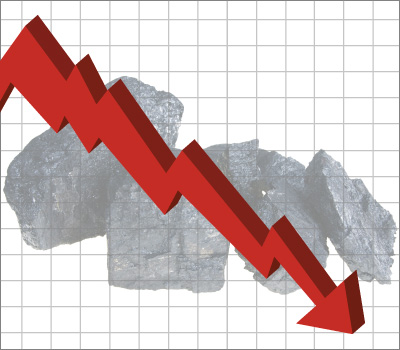Every week brings a new story about coal’s decline in America. Here are two from last week.
One is about American Electric Power, the nation’s largest electric utility, based in Ohio but ranging over 11 states in the South and Midwest. AEP is the farthest thing from a good actor in the utility sector. Between 2008 and 2010, the company raised executive compensation by 30 percent, laid off 2,600 workers, spent almost $29 million lobbying the federal government, and paid a tax rate of -9 percent [PDF]. Yes, negative nine. It’s that kind of company.
So it’s significant that last week, AEP reaffirmed its intention to accelerate a shift away from coal. By 2020, according to CEO Nicholas Akins, coal will fall from 67 percent of AEP’s assets to 50 percent.
Cheap natural gas is part of the story, but only part. Natural gas will rise from 24 to 27 percent of AEP’s generation, Akins said. That leaves 14 percent to be filled by nuclear, renewables, hydro, storage, and efficiency.
Why are they doing it? From Akins’ “Leadership Message”:
Several factors are driving us in this direction, including new environmental regulations; the economics of coal versus natural gas; the operating cost, age and efficiency of some coal units; increased competition; and grid reliability.
(AEP exaggerates the impact of EPA rules in these matters.)
We will retire more than 5,100 megawatts of coal-fired generation and retrofit nearly 11,000 megawatts with new, advanced pollution controls or upgrade existing control equipment. Additional coal-fired generation may be refueled with natural gas.
Boom.
And that brings us to our second news story from last week:
Southern Co., one of the largest U.S. consumers of coal, expects to generate 57 percent of its power from natural gas by 2020 if low prices and new environmental rules remain in effect.
Southern, suffice to say, doesn’t have any more virtuous motives than AEP. It’s just the way the market is moving:
Southern, whose energy output matches that of the country of Australia [!], has halved its coal use to about 35 percent of energy sales since 2007, [CEO Thomas] Fanning said. The company’s gas-fired generation rose threefold to 47 percent.
Boom again.
The U.S. Energy Information Administration is catching up:
In 2010, the U.S. Energy Information Administration (EIA) projected that coal would drop to 44 percent of America’s electrical generation by 2035. Actual generation dropped to that level in 2011.
This week, the agency again adjusted its long-term figures for coal in the U.S., projecting that generation will fall to 39 percent by 2035.
How much do you want to bet there are more downward adjustments coming?



